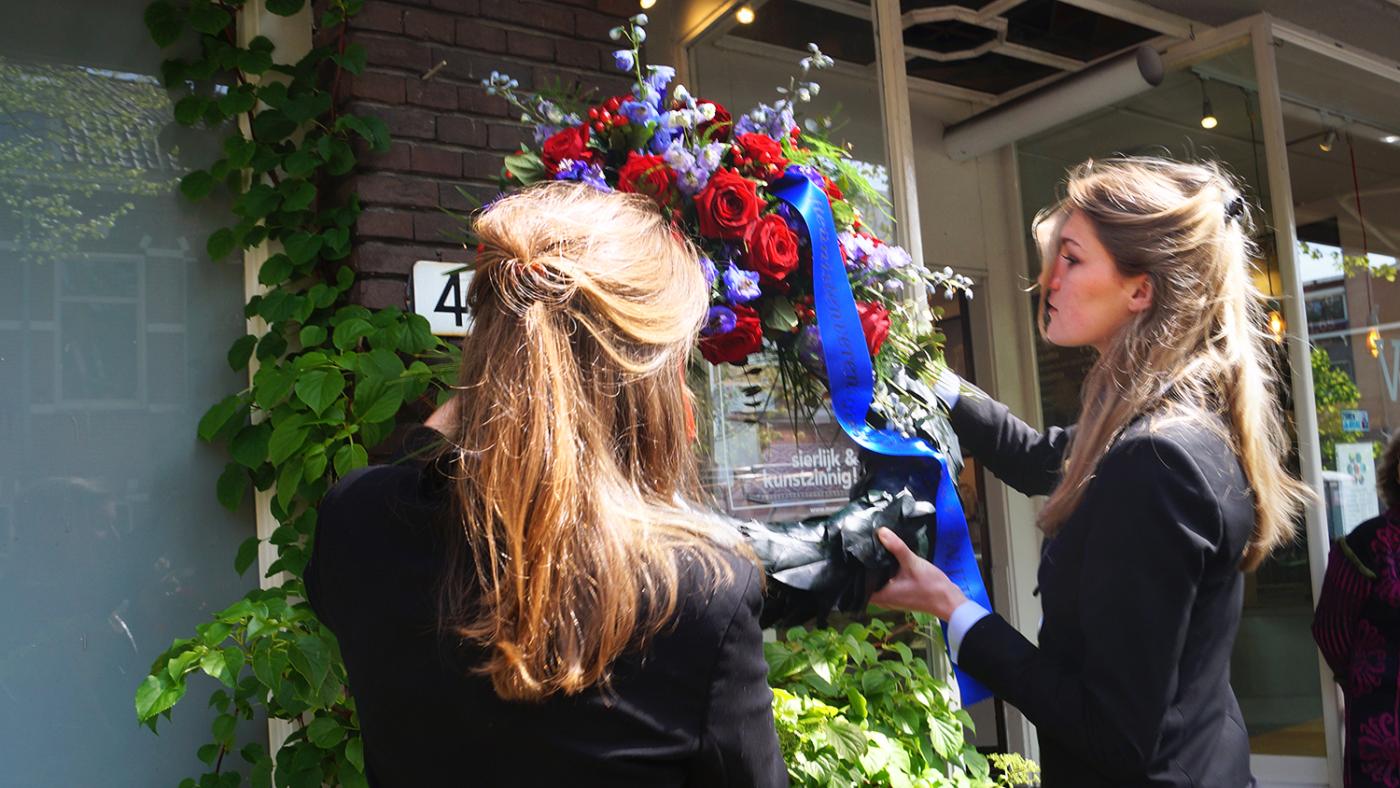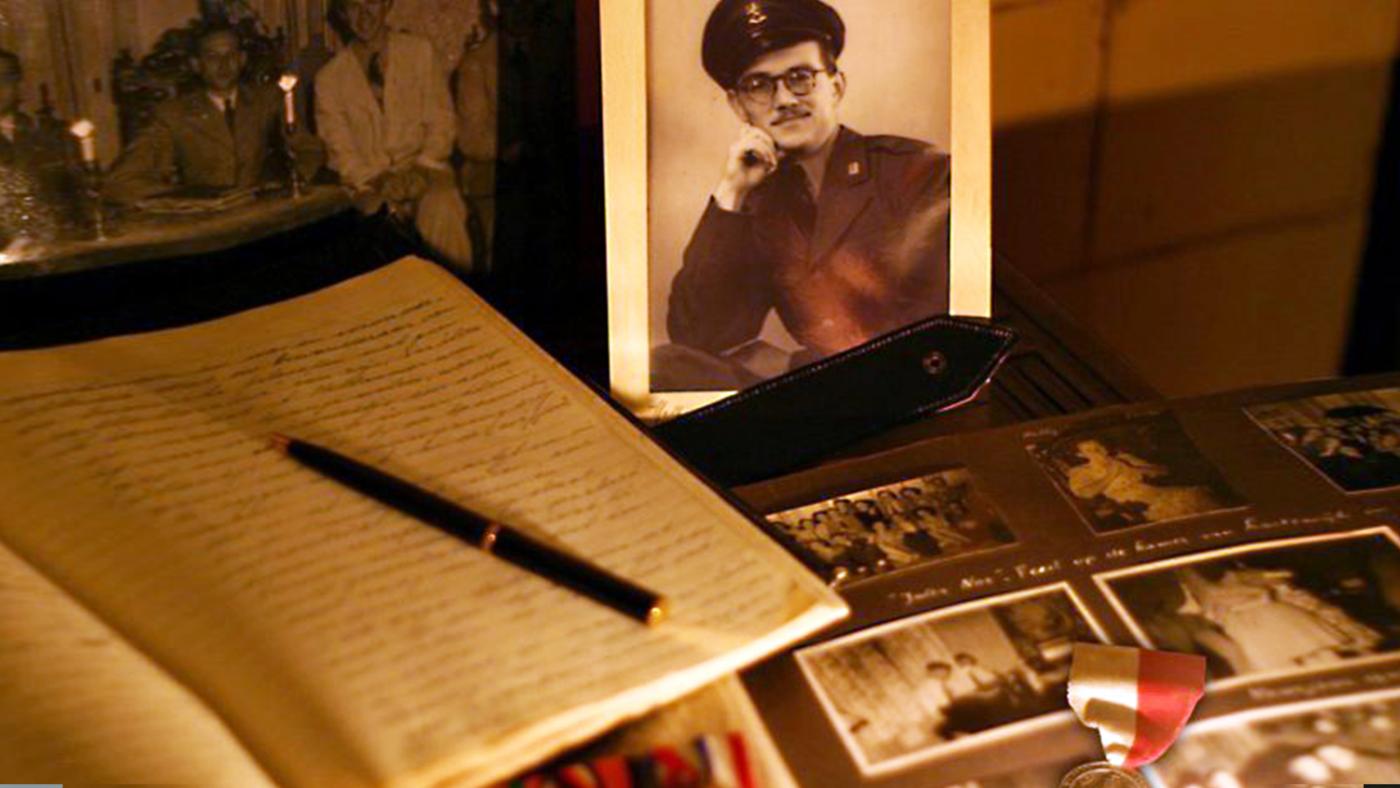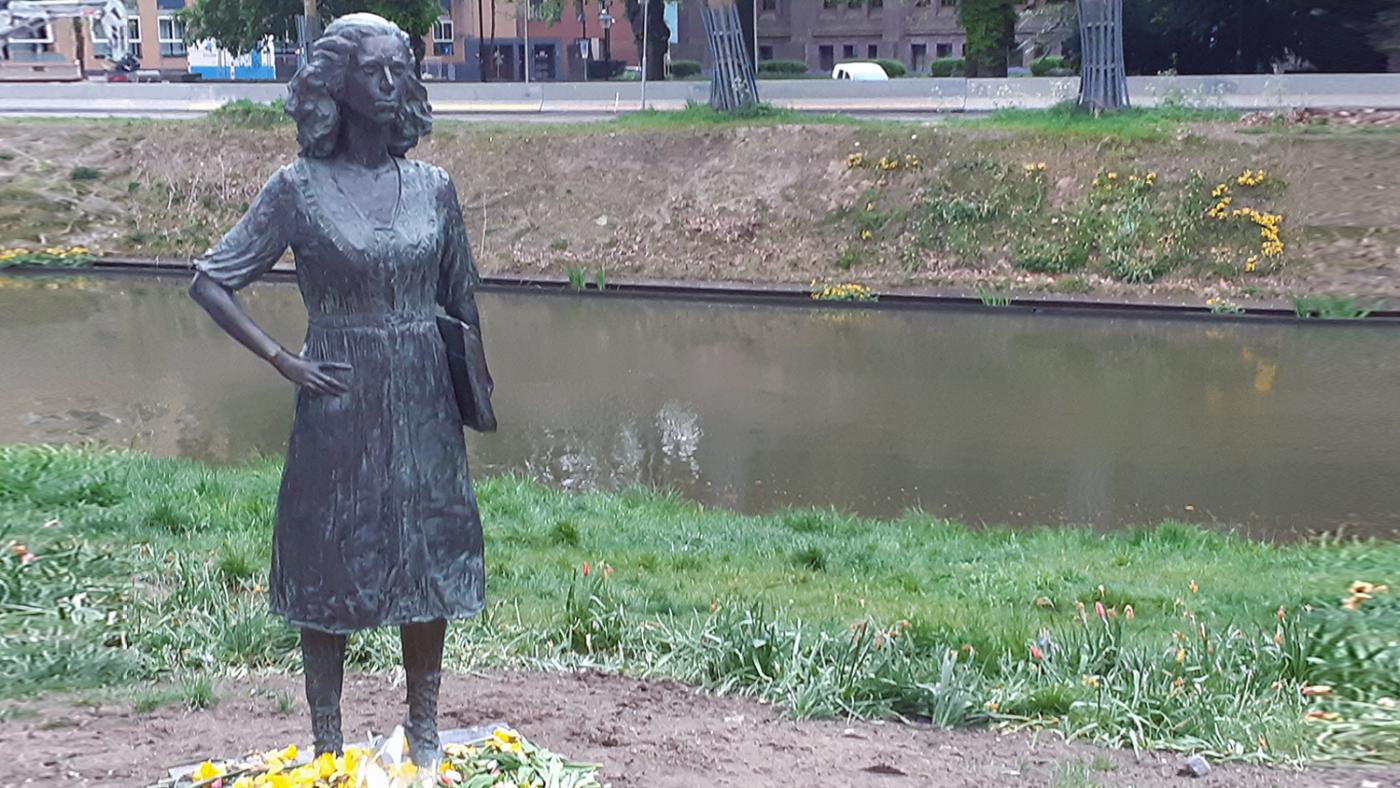History student researches how UVSV and Unitas recollect World War II
‘UVSV makes remembrance day personal’

Trui and Truus' resistance story is an inspiring one. Truus van Lier was a member of the Amsterdam-based resistance group CS-6. In 1943, aged 22, she shot and killed an NSB (Dutch nazi group, Ed.) chief of police, an act for which the UVSV member was executed later. She is sometimes called "Utrecht’s Hannie Schaft". Her cousin, Trui van Lier, founded a daycare called Kindjeshaven (Children’s Port, Ed.) during the war, through which she helped protect and save at least 150 Jewish children.
Adopted plaque
UVSV keeps their memory alive, regularly reminding current members of their stories. Every May 4th, on Dutch Remembrance Day, the UVSV board lays a wreath on Prins Hendriklaan Avenue, where the daycare used to be. Afterwards, they light a candle near a memorial stone in the association's headquarters. Lastly, the board joins the boards of the other student associations in Utrecht to lay a wreath at Dom Square together.
Board member Pien van Everdingen explains: “In 2012, we ‘adopted’ the plaque on Prins Hendriklaan. We've been commemorating May 4th in this manner ever since." A few years ago, two former members and nine active members of the association joined forces with the Na De Dam theatre to create an audio tour of Utrecht called "Women in the Resistance". The walking tour tells the story of Truus and Trui, connecting it to several places in the city. “Almost all of our members did the tour at the time. Now that May 4 is getting closer, we’re promoting it again.”

Photo: DUB
Introduction
But the relationship between the sorority and the commemoration of World War II goes beyond May 4. “It starts in the introduction week already. We use stories from the war to inform aspiring members about the special things our members did back then, and what this says about the norms and values of our association," says Pien.
“Furthermore, all aspiring members watch a documentary about Truus. Those who join the board also need to read a book about the student resistance and watch several documentaries about Truus and Trui.” Pien continues. Board member Floor Brinkhuis adds: “The more time passes since the war, the fewer people can tell us about it from experience. As an association that relies on tradition and history, we need to keep telling this story.”
New generation
It’s not surprising that student associations feel so connected to stories about World War II, explains History student Michelle Moonen, who researched the topic. “Associations that were around during the war tend to focus on a handful of people who stood out in some way at that time. These former members set the example for the association today, as it were. Their stories embody norms and values that the association wants to live by.”
“UVSV really tries to relate Trui and Truus’ stories to contemporary times. What would it be like to go through what they went through? How would you handle such situations yourself? That way, they turn remembrance day into something personal, which goes with our times very well. There aren't many people around who lived through the war anymore, which means that a direct commemoration becomes more and more difficult for younger generations. It gets harder to envision just how serious it was. A student association, where people have a shared identity in a closed environment, is the perfect place to keep a tradition of remembrance in place. It helps to feel a direct connection to specific people you can identify with.”

Daniël de Moulin. Photo: DUB
Connection
Michelle’s article about how UVSV honours Truus and Trui van Lier was published recently by the journal Aanzet. It is part of a bigger study she did on the ties between Utrecht-based student associations and the war. “I had to do research in the area of political memory studies for a second-year course in which we study how certain events are remembered by looking at how they set up these commemorations."
“Many students chose a topic related to something that happened longer ago, but I thought there’s a lot of interesting stuff right here. I’ve always found that student associations are fascinating organised because they are so closed, so inwardly focused. I wanted to study how that affects the commemoration of the Second World War.”
Unitas
Aanzet will publish Michelle's article about Unitas in a few weeks. For this student association, the memory of World War II is mainly connected to former member Daniël de Moulin, who refused to sign a declaration of loyalty to the occupier and then fled to England with two friends to join the resistance there. Afterwards, De Moulin joined the Royal Dutch-Indies Army (KNIL). Unitas not only sees him as a major resistance hero but also as the "re-founder" of the association, which had been disbanded by the occupier during the war. Stay tuned to Aanzet's website to know more.

A statue of Truus van Lier. Photo: DUB
Laying flowers at graduation
Apart from keeping the memory of Truus and Trui van Lier alive, UVSV also keeps the tradition of laying a flower by the Anne Frank statue at the Janskerkhof when they graduate. Since a statue of Truus van Lier was placed at Catharijnesingel in 2021, they lay flowers sometimes as well.
Pien: “It’s not as though we changed the tradition, but many students feel very much connected to Truus and Trui van Lier. Anne Frank’s story is impressive, of course, but we feel a greater affinity for Truus and Trui. That’s probably why some members have started laying flowers at that statue. I rather like hearing that.”